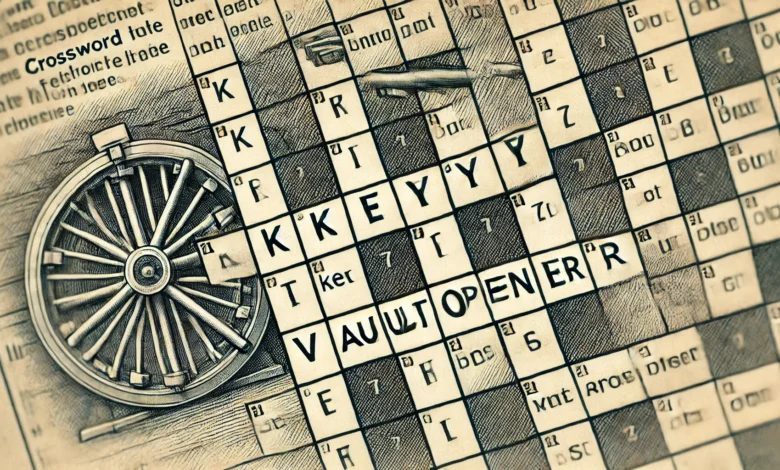The Vault Opener in the NYT Crossword: A Comprehensive Guide

Introduction: What is the Vault Opener in the NYT Crossword?
The vault opener clue in the New York Times (NYT) crossword puzzle is a popular, yet challenging puzzle clue. Many crossword enthusiasts have encountered this question, particularly when they’re faced with clues that seem to be both tricky and elusive. Understanding what it refers to is key to solving it correctly. Whether you’re a novice solver or an experienced puzzler, cracking this clue is all about recognizing the pattern and connecting the clue to the correct word.
Understanding the Clue: Vault Opener in the NYT Crossword
When you’re presented with the clue vault opener, the first thing you should consider is the literal meaning of the words. “Vault” can refer to a variety of things: a secure storage space, a gymnastic move, or even a part of a building. “Opener” typically refers to something that initiates or starts a process. This dual nature of the clue can lead you down several paths before you hit on the correct answer.
In many instances, the solution to the vault opener clue is KEY. This makes sense both literally and figuratively. A key is an object used to open a vault or lock. It also fits neatly into crossword puzzles, where short, simple words are often used as answers.
Common Answers for Vault Opener in Crosswords
While KEY is a frequent solution to this particular clue, other variations might come up depending on the context of the crossword puzzle you’re working on. Some of the alternatives might include:
- CODE: In a modern sense, a vault may require a code to open, especially in digital environments.
- COMBO: Referring to a combination lock, where a specific sequence of numbers or letters is the “opener.”
- LOCK: Though this is technically the opposite of an opener, it may be used in creative crossword contexts.
Tips for Solving the Vault Opener Clue in Crosswords
When faced with the vault opener clue, consider the following tips to narrow down your choices:
- Context Is Key: Check the surrounding clues. Is there a hint that the puzzle is asking about a physical object, like a key or lock? Or is it referring to something more abstract, like a code or combination?
- Think About Word Length: The number of squares in the answer will guide you toward the right answer. For instance, a three-letter word is likely a KEY, while a five-letter word might point to COMBO or CODE.
- Consider Synonyms: Words like “opener” can be tricky because they have multiple meanings. In the context of a vault, “opener” can be interpreted as something that allows access, so don’t hesitate to think about other forms of “access” or “entry.”
- Look for Letters in Common: If you already have some letters filled in from crossing words, use them to eliminate unlikely options.
- Use a Crossword Dictionary: Sometimes, puzzle constructors lean on less commonly known solutions. A crossword dictionary or an online solver tool can be a great resource to check if a solution is a valid word in the crossword lexicon.
Why the Vault Opener Clue is a Favorite for Crossword Solvers
The vault opener clue is a favorite among crossword solvers because of its blend of literal and figurative meanings. It requires you to think critically about word associations while also testing your knowledge of common crossword answers.
The crossword puzzle is a game that challenges not only your knowledge of the English language but also your ability to make connections between clues. The vault opener clue is just one example of how this mental exercise can stimulate your problem-solving skills.
Conclusion: Mastering the Vault Opener Clue
Solving the vault opener clue in the vault opener nyt crossword is a satisfying experience, especially when you break down the clue methodically. Whether the answer is KEY, CODE, or another synonym, the key to solving it lies in understanding both the literal and abstract meanings of the words involved.
If you’re struggling, take a step back, re-examine the puzzle from different angles, and trust your instincts. With practice, you’ll find that these tricky clues become more manageable and, dare we say, even fun to solve.




